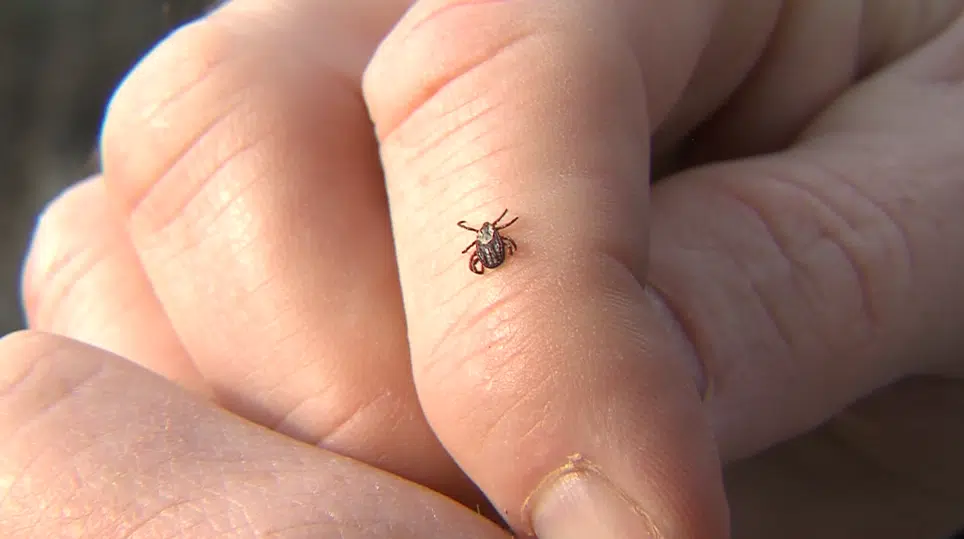
Ticks active in the Southern Interior
KAMLOOPS — As the temperatures rise, so do the number of tick bites.
Tick season has kicked off, and Interior Health is warning the public to take precautions, to avoid being bitten.

KAMLOOPS — As the temperatures rise, so do the number of tick bites.
Tick season has kicked off, and Interior Health is warning the public to take precautions, to avoid being bitten.
The most common species here in the Southern Interior is the Wood Tick, it’s not known to carry Lyme disease, but can carry other diseases and toxins, resulting in serious illness or even paralysis.

There are some simple things you can do, that go a long way to prevent being infected.
They are not even 4 millimetres in size, but it’s safe to say ticks are a major problem in many parts of the country.
“This is the time of year that a lot of people start experiencing ticks, and any place where you’ve got the big horn sheep or deer, you’re going to find ticks, and contrary to some belief, they don’t drop from on top, they actually climb up your pant leg and onto you,” says Frank Ritcey, Provincial WildSafeBC Coordinator.
With the snow gone, and beautiful spring weather officially here, hikers and their pets are taking every opportunity to enjoy the outdoors. But that change in weather means ticks are active, ready to feed on the blood of humans and animals. These tiny pests aren’t just annoying, they can also carry a host of serious diseases.
“The ticks that carry the Lyme disease are more likely the black legged tick which lives down on the coast, although there have been reports of lyme disease being carried by a Rocky Mountain tick which we have here, it’s not a big concern yet, having said that you don’t want any tick on you.”
Ticks are typically found in wooded areas or along trails, but not usually in trees. They wait on blades of grass or shrubs for a warm host to pass by. So remember to cover up before heading outdoors.
“Tuck your pant legs into your socks and then use something like a deep based insect repellent spray around your pants and you should be good, and every time you come back from your hike check up around your hair line, because the tick’s natural indication is to climb upwards.”
Make it a priority to check yourself, your children, and don’t for get about your pets.
“About 80% of ticks will be around the head and neck area so that’s the first place to look, but keep in mind that also means that 20% can be anywhere on the body, I’ve seen them on the tip of the tail, I’ve seen them on the trunk of the body,” says Veterinarian Dr. Ken Gummeson, Aberdeen Veterinary Hospital.
Dog owners should be vigilant, some wood ticks have toxins that can cause temporary muscle weakness and paralysis, and while it’s rare, if your pet goes untreated, the outcome could be fatal.
“The most serious disease we would actually worry about as being fatal in this area is Rocky Mountain Spotted Fever, it’s uncommon but it does happen, the other is a tick-borne disease called tularemia, another bacterial infection, not very common but it can be very serious,” says Gummeson.
Most tick bites don’t result in illness however, it can often be hard to detect. Symptoms of Lyme disease include fatigue, fever, headaches and skin rash. Experts say if you do find a tick on your body, act quickly, grasp it using a tweezer, gently pulling it loose.
“If it’s deeply embedded, that’s when you should go to the hospital and have a professional take it out, you don’t want to squeeze and engorged tick because that will re-introduce the bacteria materials in the tick’s mouth, back into your system,” says Ritcey.


